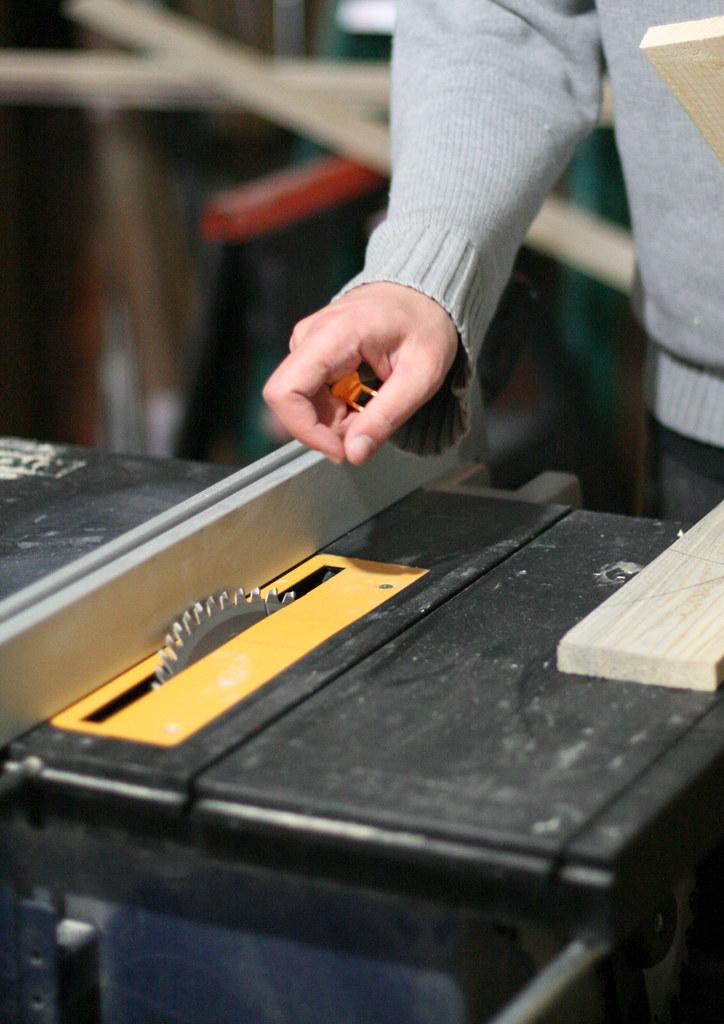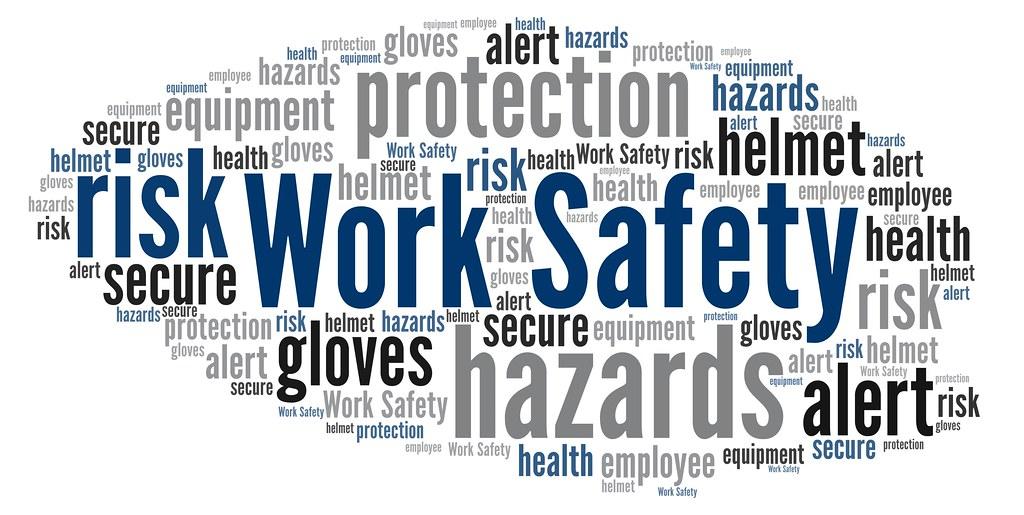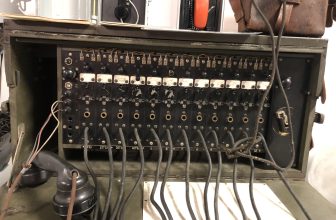
Originally posted 2024-01-19 11:16:51.
Table saws are powerful tools that can greatly enhance your woodworking projects, allowing you to achieve precise cuts and intricate designs. However, using a table saw requires proper knowledge and technique to ensure safety and maximize its potential. In this article, we will guide you through the essential steps and precautions necessary for using a table saw effectively. Whether you are a beginner or an experienced woodworker looking to enhance your skills, this informative guide will provide you with the knowledge and confidence to operate a table saw with precision and confidence.
Selecting the Right Table Saw for Your Needs
When it comes to woodworking, having the right tools is essential. One of the most important tools in any woodworker’s arsenal is a table saw. But with so many options available on the market, how do you know which one is right for you? In this post, we will guide you through the process of selecting the perfect table saw for your specific needs.
1. Consider Your Project Requirements
Before purchasing a table saw, it’s important to consider the type of projects you will be working on. Different table saws have different features and capabilities, so you’ll want to choose one that is tailored to your needs. Ask yourself questions like:
- What kind of materials will I be cutting? (softwood, hardwood, plywood, etc.)
- What size and thickness of the wood will I be cutting?
- Do I need the ability to make precision cuts or angled cuts?
By understanding your project requirements, you can narrow down the options and choose a table saw that will make your work easier and more efficient.
2. Consider the Size and Power of the Table Saw
The size and power of the table saw are important factors to consider. Table saws are available in various sizes, from compact portable models to larger stationary models. If you have limited space in your workshop or need to transport your saw to different job sites, a portable table saw might be the best option for you. On the other hand, if you have a dedicated workshop and will be working on larger projects, a stationary table saw with a larger table surface and more powerful motor might be the better choice.
3. Safety Features and Ease of Use
Safety should always be a top priority when using power tools. When choosing a table saw, look for models that come with built-in safety features such as blade guards, riving knives, and anti-kickback pawls. Additionally, consider the ease of use and convenience factors like quick blade changes, adjustable fences, and ergonomic designs. These features will not only make your woodworking experience safer but also more enjoyable and efficient.
4. Quality and Durability
Investing in a high-quality, durable table saw will ensure that it lasts for years to come. Check the construction and materials used in the table saw to ensure it is robust and built to withstand heavy use. Read reviews and consider the reputation of the manufacturer to gauge the overall quality of the product. A sturdy and reliable table saw will not only deliver accurate cuts but also save you money in the long run by eliminating the need for frequent repairs or replacements.
5. Budget Considerations
Lastly, consider your budget when selecting a table saw. Table saws can range in price from a few hundred dollars to several thousand dollars, depending on the brand, features, and overall quality. Set a budget that suits your needs and expectations, and then explore the options within that range. Remember, while it may be tempting to go for the cheapest option, you generally get what you pay for. It’s better to invest a little more upfront in a quality table saw that will deliver better results and last longer.
Understanding the Key Components of a Table Saw
When it comes to woodworking, a table saw is an essential tool that can make a world of difference in the outcome of your projects. Whether you’re a beginner or a seasoned woodworker, it’s crucial to understand the key components of a table saw to ensure safe and efficient operation. Below, we’ll delve into the various parts that make up this versatile tool.
1. Blade
The blade is the heart of every table saw. It’s typically made of high-speed steel or carbide and comes in various sizes and tooth configurations, depending on the type of cut you’re planning to make. It’s important to choose the right blade for your project to achieve clean and precise cuts. Always make sure the blade is sharp and securely tightened before use.
2. Tabletop
The tabletop is the flat surface where you place your workpiece. It’s usually made of cast iron or aluminum, providing stability and accuracy. Look for a tabletop that is smooth, flat, and has integrated miter slots for easy attachment of accessories. Additionally, consider a table saw with an extension wing for larger workpieces or increased workspace.
3. Fence
The fence acts as a guide, keeping your workpiece in position while making rip cuts. It’s crucial for ensuring straight and parallel cuts. Look for a fence that is easy to adjust and lock securely in place. Some table saws have a T-square style fence, while others use a rack-and-pinion mechanism for smooth and precise adjustments.
4. Miter Gauge
The miter gauge is an essential accessory that helps you make angled or crosscuts. It consists of a metal bar and a pivoting head. The bar slots into the miter slots on the tabletop, allowing you to secure your workpiece at various angles. Ensure the miter gauge glides smoothly and locks securely into position for accurate and safe cuts.
5. Safety Features
Table saws come with several safety features to protect the operator from potential accidents. These may include a blade guard, anti-kickback pawls, riving knife, and a push stick. The blade guard provides a barrier between the operator and the blade, while the anti-kickback pawls prevent the workpiece from being thrown back. Always familiarize yourself with the safety features of your table saw and use them accordingly to minimize the risk of injury.
By and how they contribute to its operation, you can confidently use this powerful tool to bring your woodworking projects to life. Remember to prioritize safety and always follow the manufacturer’s guidelines. Happy woodworking!

Safety Precautions and Proper Protective Gear
Using a table saw can be a valuable skill to have, but it is crucial to prioritize safety before anything else. Understanding the proper safety precautions and using the right protective gear will help keep you safe and prevent any potential accidents. Here are a few essential safety measures to follow when using a table saw:
1. Eye and Ear Protection
Wearing safety goggles or a face shield is a must when operating a table saw. This will protect your eyes from flying debris and potential wood chips. In addition, ear protection such as earplugs or earmuffs should be worn to minimize the risk of hearing damage caused by the loud noise generated by the saw.
2. Proper Clothing
Always wear close-fitting clothing and avoid loose items like jewelry or long, dangling accessories. Loose clothing can easily get caught in the saw’s moving parts, leading to severe injuries. Opt for long sleeves to protect your arms and sturdy footwear that provides good grip and protects your feet from potential falling objects.
3. Blade Guard and Riving Knife
Ensure that the table saw’s blade guard is in place and properly adjusted at all times. The blade guard helps prevent accidental contact with the spinning blade and reduces the risk of kickback. Additionally, the riving knife, which is a metal strip located behind the blade, should be aligned with the blade height to prevent the wood from pinching or binding.
4. Push Sticks and Featherboards
Push sticks and featherboards are invaluable tools when working with a table saw. Push sticks keep your hands at a safe distance from the blade while still allowing you to guide the material through the cut. Featherboards apply pressure against the workpiece, keeping it firmly against the fence and table for a stable and controlled cut.
5. Workspace Organization
Keep your workspace clean and organized to minimize potential hazards. Remove any scraps or debris from the table saw and surrounding area to prevent them from interfering with the saw’s operation. Make sure there is ample space around the saw to maneuver safely, and avoid distractions while operating the saw to maintain full focus on the task at hand.
| Protective Gear | Function |
|---|---|
| Safety Goggles/Face Shield | Protects eyes from debris |
| Earplugs/Earmuffs | Reduces noise-induced hearing damage |
| Close-fitting Clothing | Prevents clothing from getting caught in the saw |
| Push Sticks | Maintains distance from the blade while pushing material |
| Featherboards | Keeps workpiece stable against the fence and table |

Essential Techniques for Using a Table Saw
When it comes to woodworking, one tool that stands out for its precision and versatility is the table saw. Whether you are a novice hobbyist or an experienced woodworker, understanding the is vital to ensure both your safety and the quality of your work. In this post, we will explore five key techniques that will help you master the art of using a table saw.
1. Safety First!
Before diving into the techniques, it is crucial to prioritize your safety. Always wear appropriate safety gear, including safety glasses and ear protection. Additionally, ensure that the blade is properly aligned and the guard is in place to avoid any accidents. Remember to keep your hands away from the blade at all times, and never attempt to make adjustments while the saw is running. By taking these precautionary measures, you will minimize the risk of injury and work confidently with your table saw.
2. Setting Up Your Workstation
A well-organized workstation is key to efficient and safe woodworking. Ensure that your table saw is set on a stable and level surface, with ample space around it for easy movement. Use a table saw fence to guide your workpiece accurately and minimize kickbacks. To further enhance your setup, consider using featherboards and push sticks to maintain control over your material as you feed it through the saw. Remember: a clutter-free and organized workspace not only promotes safety but also enhances productivity.
3. Mastering the Rip Cut
The rip cut is one of the fundamental techniques you’ll use with a table saw. It involves cutting a workpiece parallel to its grain. To make accurate rip cuts, mark your desired cut line on the workpiece, align it with the table saw fence, and carefully feed it through the blade. Always maintain a firm grip on the workpiece and apply steady, even pressure as you cut. Remember to avoid forcing the material through the saw, as this can lead to dangerous kickbacks. Practice this technique with scrap wood until you achieve consistent and precise rip cuts.
4. Perfecting the Crosscut
Another essential technique is the crosscut, which involves cutting a workpiece perpendicular to its grain. To achieve clean and accurate crosscuts, use a miter gauge or sled to guide your workpiece across the saw blade. Ensure that the miter gauge is set at the desired angle and securely locked in place. Always make sure your hands are a safe distance away from the blade and always use a push stick to guide the material through. By mastering the crosscut technique, you will be able to create perfectly sized and angled pieces for your woodworking projects.
5. Dado and Rabbet Cuts
Table saws are not limited to just simple cuts. With the appropriate blade and techniques, you can also create dado and rabbet cuts. Dado cuts involve removing a channel of material across the wood grain, while rabbet cuts involve removing material along the edge of a workpiece. To make precise dado and rabbet cuts, use a dado blade or stack dado set for the desired width. Adjust the blade height and fence position accordingly, guiding your workpiece steadily through the saw. These versatile cuts are essential for joinery and can greatly enhance the strength and stability of your woodworking projects.
By mastering these essential techniques, you will unlock the full potential of your table saw and elevate your woodworking skills to new heights. Remember to always prioritize safety and practice each technique with care and precision. With time and practice, you will become confident in using a table saw to bring your woodworking visions to life with unmatched precision and craftsmanship.

Maintenance Tips to Ensure Safe and Efficient Operation
Proper maintenance of your table saw is crucial for both your safety and the efficiency of your woodworking projects. By following these maintenance tips, you can ensure that your table saw remains in good working condition and continues to deliver accurate cuts every time.
1. Regular Cleaning
Cleanliness is key when it comes to keeping your table saw in optimal condition. Regularly remove dust, debris, and sawdust from all parts of the table saw, including the tabletop, blade guard, and miter gauge. Clean the dust collection system to prevent clogs and ensure proper airflow.
2. Blade Inspection and Replacement
Inspect the table saw blade regularly for any signs of wear, damage, or dullness. A dull blade not only compromises the quality of your cuts but also poses a safety risk. If necessary, replace the blade with a new one that is suitable for your specific woodworking needs.
3. Lubrication
Proper lubrication is essential to minimize friction and keep your table saw running smoothly. Apply lubricating oil or silicone spray to all moving parts, such as the blade tilt mechanism, trunnions, and adjusting screws. Follow the manufacturer’s recommendations for the type and frequency of lubrication.
4. Alignment and Calibration
Regularly check and adjust the alignment of the table saw components to ensure accurate and precise cuts. This includes aligning the blade, fence, and miter gauge. Use appropriate measuring tools, such as a dial indicator, to verify the alignment. Calibrate the rip fence and blade angle indicators to ensure they provide accurate readings.
5. Safety Features Check
Always inspect the safety features of your table saw to ensure they are functioning properly. Check the blade guard, riving knife, and anti-kickback pawls to make sure they are in good condition and correctly positioned. Test the emergency stop button to ensure it immediately stops the blade when pressed.
By following these maintenance tips, you can significantly extend the lifespan of your table saw while ensuring your safety and the efficiency of your woodworking projects. Remember to consult the table saw’s user manual for specific maintenance instructions, as different models might have unique requirements.
Q&A
Q: What is a table saw?
A: A table saw is a powerful woodworking tool designed for making straight cuts in wood, plywood, and other materials. It consists of a circular saw blade protruding through the surface of a flat table and allows users to guide the materials through the blade to achieve precise cuts.
Q: Why should I use a table saw?
A: Table saws are widely used in woodworking and carpentry because they offer outstanding accuracy and versatility. They are particularly useful for making long, straight cuts, crosscuts, bevel cuts, and more complex cuts with the help of accessories and jigs.
Q: Is it safe to use a table saw?
A: While table saws can be safe to use, it is extremely important to follow proper safety procedures. This includes wearing appropriate safety gear such as safety glasses, hearing protection, and using a push stick or push block to keep your hands away from the blade. Familiarizing yourself with the manufacturer’s safety guidelines is crucial before operating a table saw.
Q: What are some basic tips for using a table saw?
A: Here are a few basic tips for using a table saw effectively and safely: double-check and adjust the blade height and angle, ensure the fence is parallel to the blade, always keep the workspace clear of debris, and avoid putting excessive pressure on the workpiece while cutting.
Q: How should I prepare the workpiece before using a table saw?
A: Before cutting, it’s essential to prepare your workpiece properly. This involves checking for any knots or defects that could compromise the stability of the wood, measuring and marking the desired cuts accurately, and ensuring the surface is smooth and clean. Additionally, using push sticks or feather boards can greatly enhance safety and control.
Q: How can I achieve clean and accurate cuts with a table saw?
A: To achieve clean and accurate cuts, use a sharp and appropriate blade for the task at hand. Make sure the blade alignment is accurate, maintain a steady feed rate while pushing the material through the blade, and avoid rushing the process. Having a stable and properly adjusted rip fence also contributes to precise cuts.
Q: What are some common mistakes to avoid when using a table saw?
A: Some common mistakes to avoid include not using safety gear, lack of proper instruction and practice, attempting to make cuts with a dull blade, feeding the workpiece too quickly or unevenly, or attempting complex cuts without proper experience or jigs. Avoid removing the blade guard or any other safety features.
Q: Are there any maintenance tasks required for a table saw?
A: Yes, regular maintenance is crucial to ensure optimal performance and safety. It is important to keep the table clean and free from debris, check and adjust the blade alignment, oil the moving parts periodically, and change the blade when needed. Additionally, the saw’s motor and dust collection system should be regularly inspected and cleaned.
Q: Can I make bevel cuts with a table saw?
A: Yes, most table saws allow for bevel cuts by tilting the blade at an angle. Bevel cuts are particularly useful for making angled cuts or chamfers. However, it is important to refer to the manufacturer’s instructions and use proper safety measures when making bevel cuts. It is also advisable to use a miter gauge or a crosscut sled for more precise bevel cuts.
Q: Where can I find detailed information about using a table saw?
A: For detailed information about using a table saw, it is advisable to consult the owner’s manual provided by the manufacturer. Additionally, numerous online resources, woodworking books, and instructional videos are available to guide users in the safe operation and various uses of a table saw. In conclusion, learning how to safely and effectively use a table saw can greatly enhance your woodworking skills. By following the step-by-step guidelines outlined in this article, you can minimize the risk of accidents and achieve precise and professional-looking cuts. Remember to prioritize safety by wearing protective gear, understanding the tool’s components, and using the appropriate techniques for different cutting tasks.
Furthermore, regular maintenance and proper usage of the table saw will not only extend its lifespan but also ensure optimal performance. Always keep the saw clean, lubricate moving parts, and replace any worn-out components promptly.
Lastly, practice is key to mastering the table saw. Start with simple projects and gradually attempt more complex cuts as you gain confidence. Do not rush and always pay attention to your surroundings. With time, you will become proficient in using this versatile tool, allowing you to bring your woodworking projects to life with precision and finesse.
By following these guidelines and understanding the principles discussed throughout the article, you are now armed with the knowledge needed to harness the power of a table saw safely and efficiently. So go ahead, equip yourself with the necessary safety precautions, and embark on your woodworking journey with confidence!





